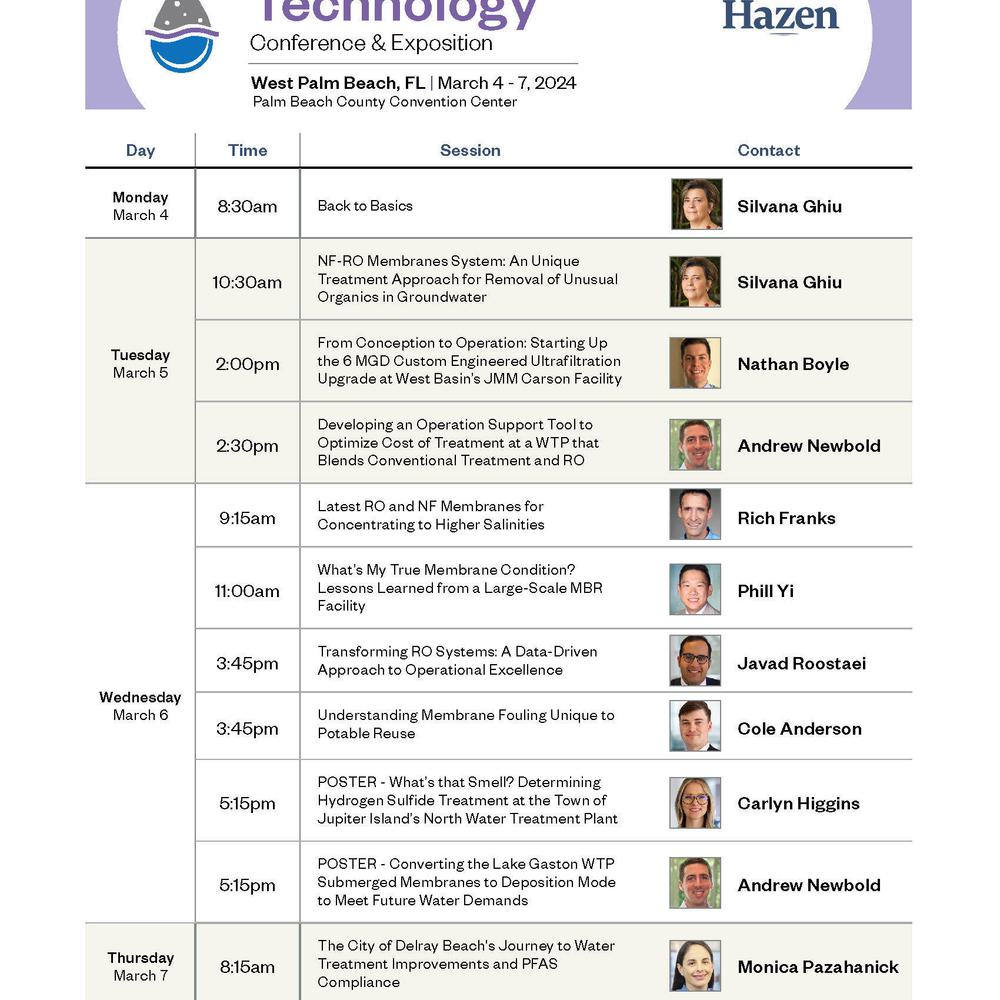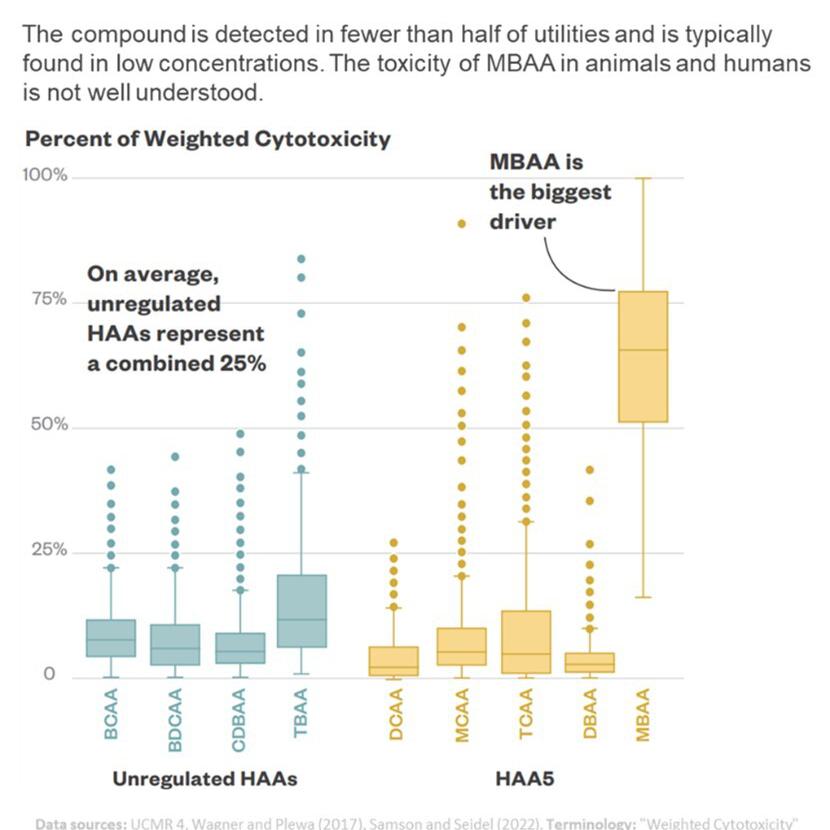October 16, 2024. It’s the U.S. EPA’s deadline for water suppliers to start notifying customers about known and suspected lead service lines. Whether these notifications spark panic or hardly make waves, it’s already clear that the deadline is causing the entire water sector to scramble for resources, for advice, and for a game plan. Whether they are years into developing their lead reduction program or just started digging up service lines, every utility we talked to is feeling the challenges of complying with the EPA’s 2021 Lead and Copper Rule Revisions (LCRR).
Kelley Dearing Smith, previous AWWA Public Affairs Council Chair and VP of Communications and Marketing for Louisville Water Company (Louisville Water), also felt the pressure while helping develop AWWA’s 2022 Lead Communications Guide and Toolkit.
Related Topics:
Top photo: Louisville Water's Kelley Dearing Smith speaks with journalists about a water main replacement. Proactive communication with media is a regular part of her work. Credit: Louisville Water.

Former AWWA Public Affairs Council Chair Kelley Dearing Smith (above, speaking at a utility conference) leads communications and marketing for Louisville Water Company, which has replaced roughly 76,000 utility-installed lead service lines.
“My ‘aha’ moment in putting the guide together was realizing that there are so many layers to this,” she admitted. “Even for a large utility like Louisville Water, the requirements on communications are overwhelming.”
The AWWA guide has since become the definitive resource for water communications pros preparing for this deadline. And two years after publication, enough utilities have experience with communicating about LCRR to share what’s working and what’s not. And because notifications are an annual event, teams will learn to iterate over time and continuously improve.
Smith can now look back and see the positive outcomes of tackling difficult conversations about lead head-on. “We are building touch points with customers we didn't have before,” she says. “We’re more than a bill now.”
Building relationships with customers is just one of the opportunities embedded in this once-in-a-generation effort. We talked to Hazen clients serving a wide range of populations, from large cities to small towns, to see what they’ve learned from communicating about LCRR.
Master Plumber Eddie Torres (above left) helped Denver Water remove thousands of lead service lines for customers—and help the customers understand that work better—before joining Hazen. Video credit: Denver Water.
Reclaim the conversation about lead.
Master plumber Eddie Torres spent his 46-year career at Denver Water before joining Hazen in 2024. As an apprentice in the late ‘70s, he started out running distribution lines and service lines and learned the “lost art” of making joints out of lead.
“Back in those days, my boss would melt lead in a pot,” explained Torres. “He put wax in there to make it more pliable and it would smoke like crazy.”
Sadly, his boss developed lung cancer from the lead fumes. “That's all he did every day.”
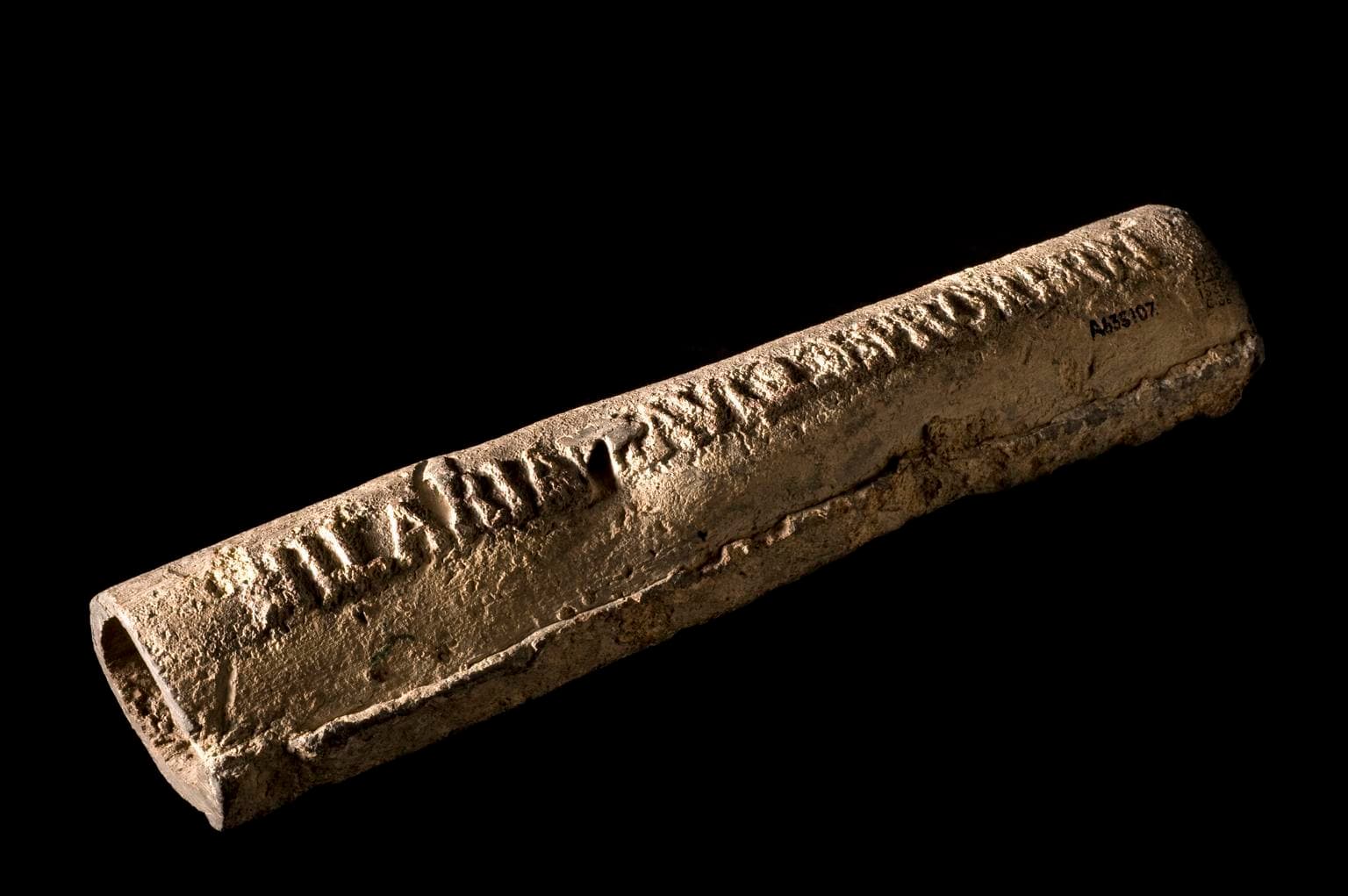
An ancient Roman lead pipe, estimated to have been made sometime between 1 and 300 A.D., showing a Latin inscription with details about the authorities who had it installed. Credit: Science Museum, London.
As far back as the Roman Empire, lead pipes made indoor plumbing possible, a revolution that improved public health and quality of life dramatically. In fact, the word “plumbing” comes from the Roman word for lead.
But as long as there have been lead pipes, there has been lead poisoning. We know now that the risks of lead to public health outweigh the benefits of this cheap, durable material.
Torres has personally lived through a massive industry shift, from lead as the ubiquitous standard to lead as a well-documented public health threat. Since Denver Water launched its lead replacement program in 2008, he has worked in the ditches removing thousands of customers’ lead service lines. It can be hard to reconcile such a profound change in one career, let alone an entire industry.

A Denver Water technician replacing lead service lines. Credit: Denver Water.
Not every customer needs a history lesson on the evolution of plumbing materials, but it helps to understand “the why” that’s driving LCRR: Why lead is so pervasive in water systems, and why it needs to be removed now.
Because the health effects of lead can be difficult to detect, it’s up to water utilities to bring up the topic and guide customers on the steps to protect themselves. With too little emphasis on the dangers of lead, homeowners may be more concerned about disturbing their azalea bushes than removing an old service line. On the other hand, sudden, scary regulatory language about lead without any preparation or context —a potential risk of the October notifications—could have overwhelming results.

Proactive messaging on lead-free drinking water can help utilities head off misinformation and scary headlines—and land positive headlines like the above story in Louisville Public Media.
Open a dialogue with your customers.
The AWWA Guide and Toolkit recommends early and proactive messaging on lead-free drinking water to head off misinformation and scary headlines. However, the window to get ahead of the required notifications is closing. At this point, how can a utility meet LCRR requirements without setting off alarm bells?
Kelley Dearing Smith recommends hitting the street to get to know impacted neighborhoods. Her team walked and drove through one such neighborhood instead of simply mailing out a batch of notifications: “We learned that some of these addresses were no longer residential: a home that had turned into a daycare or an old house that was now an attorney’s office.”
“Someone can look at an address on a map, but you don't know the story of that address until you're in the neighborhood,” she added.
Notifications are just the beginning. When you need customers to locate their service line, participate in sampling, use filters, flush pipes, and, potentially, allow crews to access their private property, there needs to be two-way communication between utility staff and customers. Add to that language barriers, cultural barriers, or just the attention span of busy, working parents and it’s a real communications challenge. How do we get customers to take action?
“We learned very quickly that it took almost five touchpoints to get to yes for replacing the customer’s lead service line,” said Smith. “And that’s even when we were offering to cover 100% of the costs. We'll send you a postcard, we'll call you, we'll show up on your street, we'll knock on your door. And finally, by the fourth or fifth time we'll get to identify the material and maybe get a yes for replacement.”
The good news is these lines of communication will outlast the LCRR program. All the work utilities are doing now will pay off in the future with earned trust and an established line of communication.
Collaborate across jurisdictions.
Christina Bolt is the PR Director for Christiansburg, a town of 24,000 people in Virginia. She supports the communications needs of a range of municipal departments, from recreation and aquatics to police and EMS. Imagine her abrupt introduction to LCRR in spring 2024 with very little background on lead in drinking water or EPA requirements.
Social media announcements in multiple languages (above left) and simple graphics (above right) are just two of many ways utilities can ensure their messages about lead reach the right customers. Credits, left to right: Denver Water, Louisville Water.
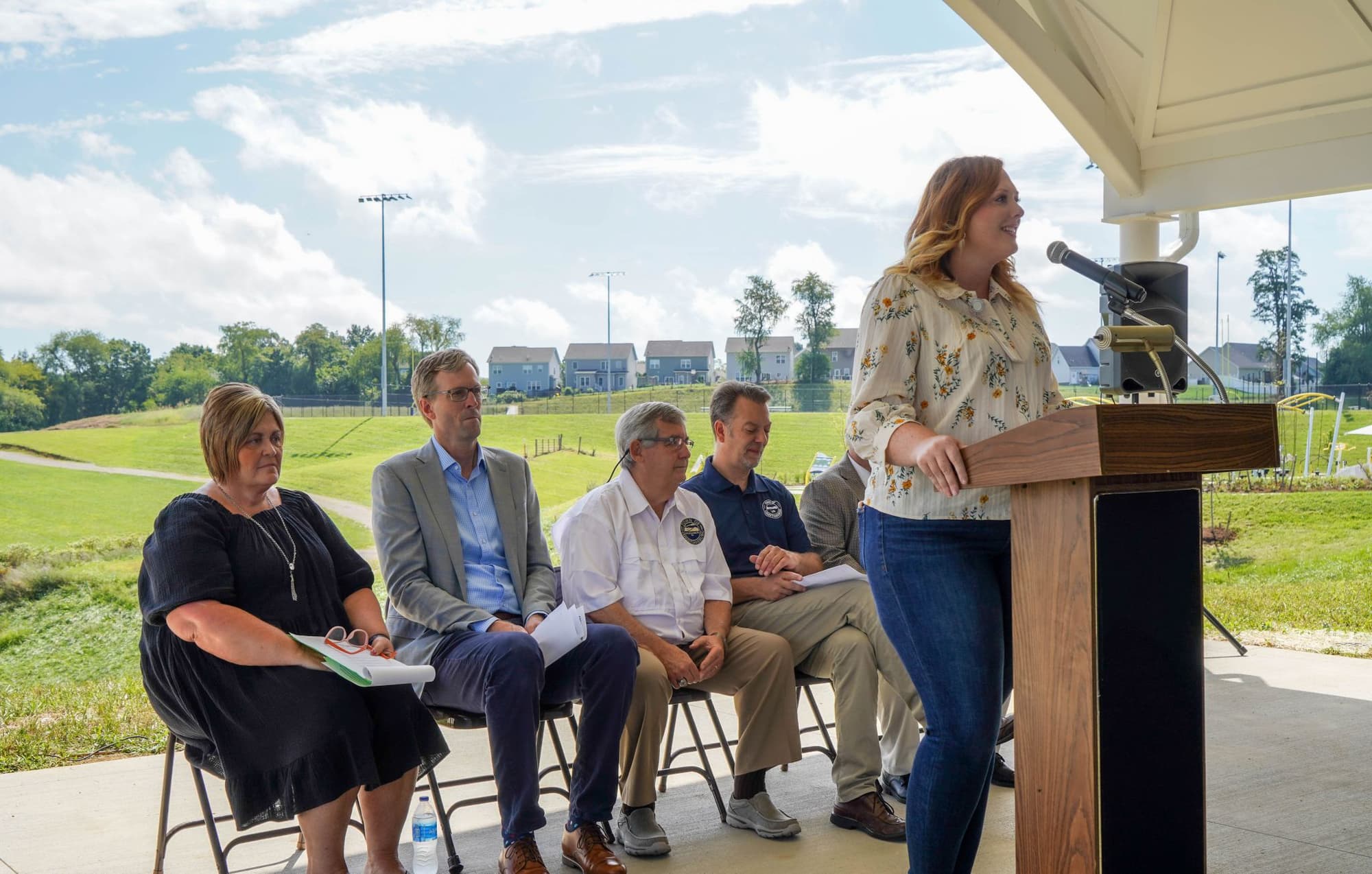
Christiansburg PR Director Christina Bolt (above, at podium) at an event to promote a public park—one of many kinds of communication services she provides for the Town government. Credit: Christina Bolt.
“It was a little late in the game for me,” she explained. “While Public Works was working on logistics, they realized they needed more intentional messaging. They eventually brought me in to work on LCRR communications.”
“We went through this whole meeting, talking about the lead and copper rule for about an hour.” Bolt described a board room full of engineers and consultants that she was meeting for the first time. “I walked out feeling like we were speaking two different languages.”
Many utilities without dedicated communications staff are in the same boat, feeling like there’s not enough time to translate these new LCRR rules for city staff, elected officials, and ultimately customers. The same can be true for larger utilities. The rule is complex for even seasoned water communications professionals to grasp.

Christiansburg sits in the Appalachian Mountains of Southwest Virginia. While the Town has its own program for communicating about the Lead and Copper Rule Revisions (LCRR), it has collaborated with nearby towns and counties to make sure their LCRR messages align. Credit: Jason Payne.

Hazen's LCRR experts can provide a solid foundation for all the mandated and recommended communications materials, such as the above guides, so utilities focus on what's most valuable: strategy.
Break down silos in your organization.
With increased public attention to lead comes increased scrutiny of utilities. It takes a high-performing team to respond quickly to setbacks. Alexis Woodrow, who manages the large and well-established Lead Reduction Program for Denver Water, shared a story about a curveball that tested their communications strategy both internally and externally.
Due to an exceedance for lead in 2012, Denver Water mobilized their lead reduction program and started crucial conversations with their customers years earlier than most other utilities. In 2016, Denver Water started replacing customer-owned lead service lines in full, and by 2020, they launched a very large and targeted replacement program. In the middle of a global pandemic, Woodrow oversaw program goals of enrolling 100,000 households.
Fortunately for Bolt, she did not have to reinvent the wheel and or simply distribute the EPA’s standard notification language. The town of Christiansburg partnered with Hazen experts who know the regulations and helped develop custom materials for the community.
Next, Bolt reached out to neighboring towns and the county to discuss how they were going to release this information. “We all have individual programs, but we coordinated a press release with similar messaging and accurate information.”
When it comes to public health concerns, customers don’t have time to unpack the political nuances of various water systems. They need utilities to share information and coordinate messaging.

Alexis Woodrow (center), who manages Denver Water’s Lead Reduction Program, speaking in a panel discussion about partnerships during the January 2023 White House summit on lead service line replacement. Credit: The White House.
As part of this program, the utility sent out 106,000 water pitchers and filters—and provided ongoing filter replacements—for customers waiting to get their lead service lines replaced. In early 2021, several customers called in a complaint that they had received replacement filters in the mail that were not certified to remove lead.
“I ended up getting about six calls within a three- or four-day period,” said Woodrow. “In the meantime, we're scrambling, trying to figure out, how did this happen?”
It was all hands on deck to investigate what went wrong, identify the defective shipments, notify 16,000 potentially affected customers, and correct the mistake. Logistics, procurement, and vendor management all became part of the critical path to customer communications.
On one hand, it’s encouraging that customers were educated and engaged enough to catch the error and report it. Even the best laid plans come with unexpected hangups, and good internal communication is the key to recovery.

A drinking water filter distributed through Denver Water’s Lead Reduction Program. Credit: Denver Water.
This is an example of how LCRR touches every person and department in an organization: funding, legal, GIS, operations, maintenance, water treatment, laboratory, communications, conveyance, and field staff, to name a few. When every part of a utility is involved in this one program, it’s an opportunity to find ways to talk across silos and share resources. In fact, this level of nimble collaboration is the only way LCRR will work.
Highlight the people who make up your organization.
There’s communicating from a distance on a government website, or through social media or a press release. Then there’s communicating face-to-face on the customer’s property. All these touchpoints are opportunities to shine a light on the real people—smart, compassionate, relatable professionals—who make up your organization.
All of the utilities we interviewed described how LCRR communications created an opportunity to humanize the utility and build relationships. Kelley Dearing Smith in Louisville advises colleagues to identify a spokesperson.
“Find someone in your water quality department who can be the face of the program,” she said. Louisville Water features Emily Fritz, an accomplished water quality scientist, in some of the videos about lead. “She’s an expert on water quality compliance, and she’s also a mom, so she’s relatable.”
Louisville Water Company often features Emily Fritz, a staff scientist and water quality expert, in videos about lead service lines and replacements, like the above video on how to collect water samples for lead testing. Video credit: Louisville Water Company.
Christina Bolt talked about how important it was to maintain a conversational and neighborly tone when writing and speaking about the technical and serious topic of lead.
“It’s a lot to digest. Even the term ‘Lead and Copper Rule Revisions’ is too clunky for the public. Instead, we focus on the vision: making sure Christiansburg is a lead-free community,” she said. “Hazen knew the requirements; I knew the voice. We made changes to better fit the community. We made it less alarming, but still factual.”
Often, field staff are the face of the LCRR program. Eddie Torres described the importance of listening to and spending time with customers in their yards and homes.
“Every customer is different,” he said. “Every neighborhood is different. Yesterday, I was in a woman’s house. She'd been there for 50 years, and her husband had passed away and she was struggling. I had to explain that the service line replacement is free. I enjoy being able to do that for people, answering their questions and taking the lead out.”
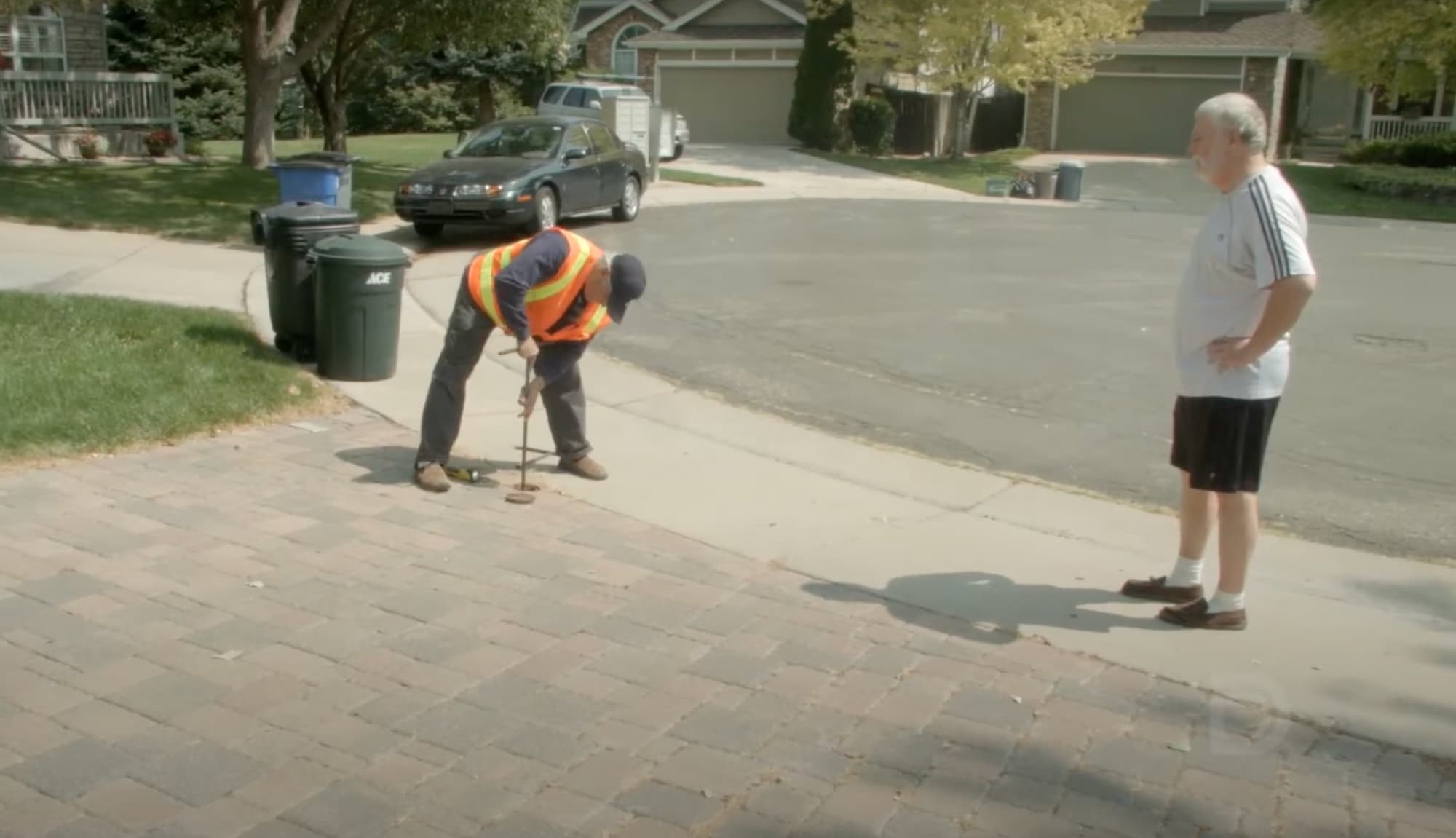
Hazen Master Plumber Eddie Torres (left) helping a homeowner during his previous work as a plumber for Denver Water. Credit: Denver Water.
Torres has personally had thousands of these conversations with property owners. But utilities of every size can empower employees to be brand ambassadors. That training can be extended to community partners. Denver Water also collaborates with paid, trained community ambassadors to reach Denver’s diverse audiences.
“If we knock on the door and they see a guy with a hard hat and vest who looks like he's representing a utility or contractor, not everybody's going to open the door,” explained Alexis Woodrow. “That's when we leverage our ambassador program, essentially finding community organizations that have inroads into different neighborhoods and communities.”
LCRR was the impetus to form these connections and train and pay community ambassadors. “We didn't have any type of outreach program of this size before,” added Woodrow. “The program was developed as part of the lead reduction program and is now expanding out into other areas for the organization.”

The Denver nonprofit CREA Results works to improve the health and financial security of immigrants. Through Denver Water's community ambassador program, the organization also helps the utility educate community members about its Lead Reduction Program, including at community events like the one above. Credit: CREA Results.
As the LCRR guide puts it: “If you don’t tell your story, someone else will.” Dedicate time and resources to training staff and partners to talk about not just lead, but the full range of services that the utility provides.
Redefine success for your organization.
“Repetition is a great teacher,” Eddie Torres told us. He was referring to field crews that remove and replace multiple services lines each day. They get more efficient with experience. The same goes for communications teams. The sustained, direct communications required by LCRR can be a gamechanger for utilities accustomed to operating quietly in the background.
But compliance with LCRR is just the beginning.
“The ‘why’ gets lost when you point to regulations as the driver,” said Becki Rosenfeldt, a technical expert in LCRR and corrosion control treatment with Hazen. “Success is not just meeting regulatory compliance, but creating a program that gains public trust, removes a dangerous material from drinking water systems, and protects public health. Personally, I think a lot about the people that we’re protecting: particularly children, pregnant women, and older adults.”
Success can also be achieving a new level of alignment within an organization. Staying focused on that goal turns the hard work ahead of utilities into a calling. Alexis Woodrow described it as a once-in-a-lifetime opportunity.
“When we started talking about this program back in 2018, I just remember sitting in meetings shaking my head, thinking there is no way this is going to work. We're going to have to manage a program that has 100,000 households enrolled. It was mind-boggling to me. But leadership at Denver Water was like, yeah, this is the right thing to do. People came together and it lifted off the ground. It’s hundreds of people all working in the same direction to do the right thing.”

A Denver Water lead service line replacement crew member celebrates the utility’s milestone of replacing 25,000 lead service lines. Credit: Denver Water.

























